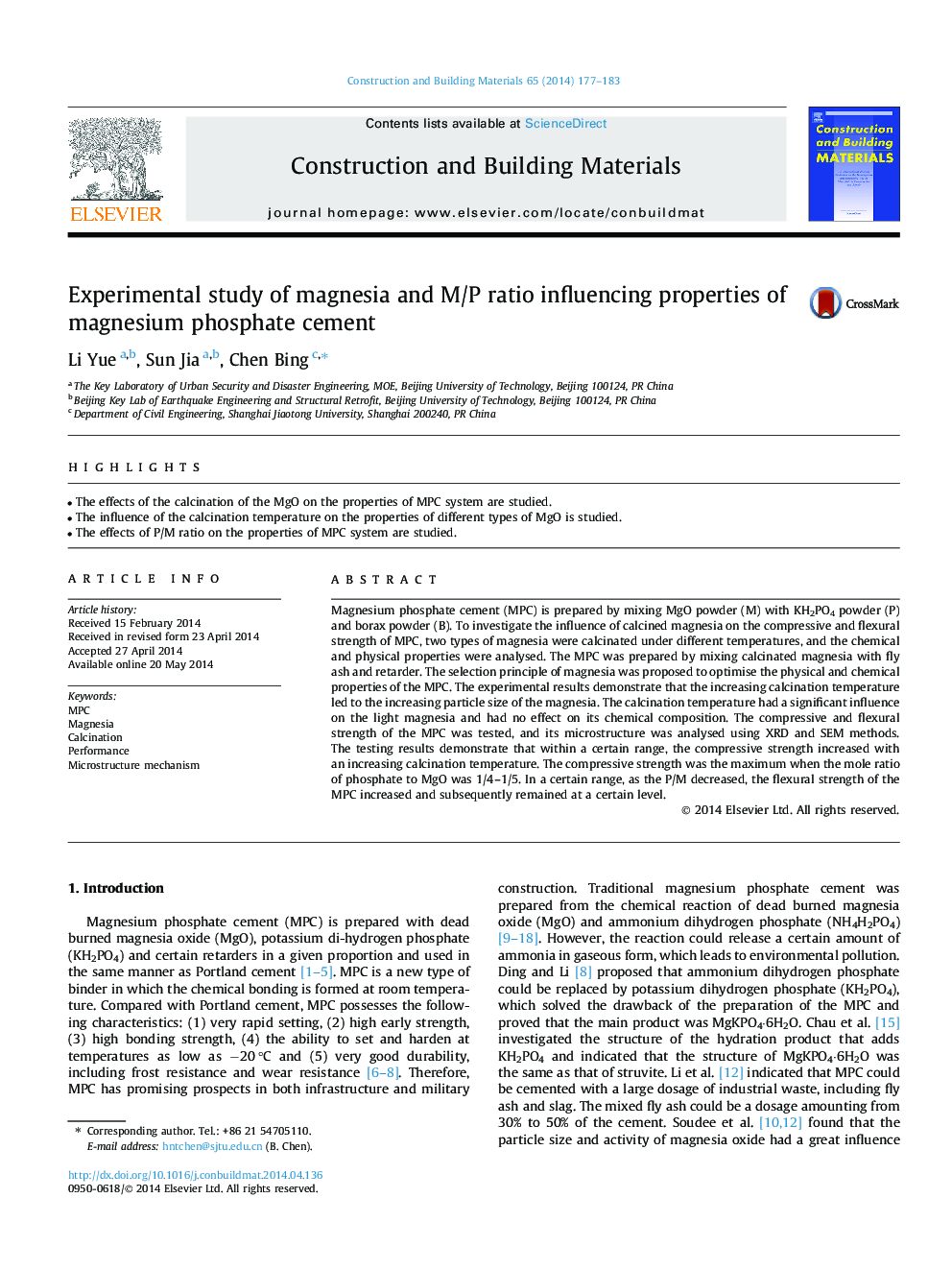| Article ID | Journal | Published Year | Pages | File Type |
|---|---|---|---|---|
| 257489 | Construction and Building Materials | 2014 | 7 Pages |
•The effects of the calcination of the MgO on the properties of MPC system are studied.•The influence of the calcination temperature on the properties of different types of MgO is studied.•The effects of P/M ratio on the properties of MPC system are studied.
Magnesium phosphate cement (MPC) is prepared by mixing MgO powder (M) with KH2PO4 powder (P) and borax powder (B). To investigate the influence of calcined magnesia on the compressive and flexural strength of MPC, two types of magnesia were calcinated under different temperatures, and the chemical and physical properties were analysed. The MPC was prepared by mixing calcinated magnesia with fly ash and retarder. The selection principle of magnesia was proposed to optimise the physical and chemical properties of the MPC. The experimental results demonstrate that the increasing calcination temperature led to the increasing particle size of the magnesia. The calcination temperature had a significant influence on the light magnesia and had no effect on its chemical composition. The compressive and flexural strength of the MPC was tested, and its microstructure was analysed using XRD and SEM methods. The testing results demonstrate that within a certain range, the compressive strength increased with an increasing calcination temperature. The compressive strength was the maximum when the mole ratio of phosphate to MgO was 1/4–1/5. In a certain range, as the P/M decreased, the flexural strength of the MPC increased and subsequently remained at a certain level.
